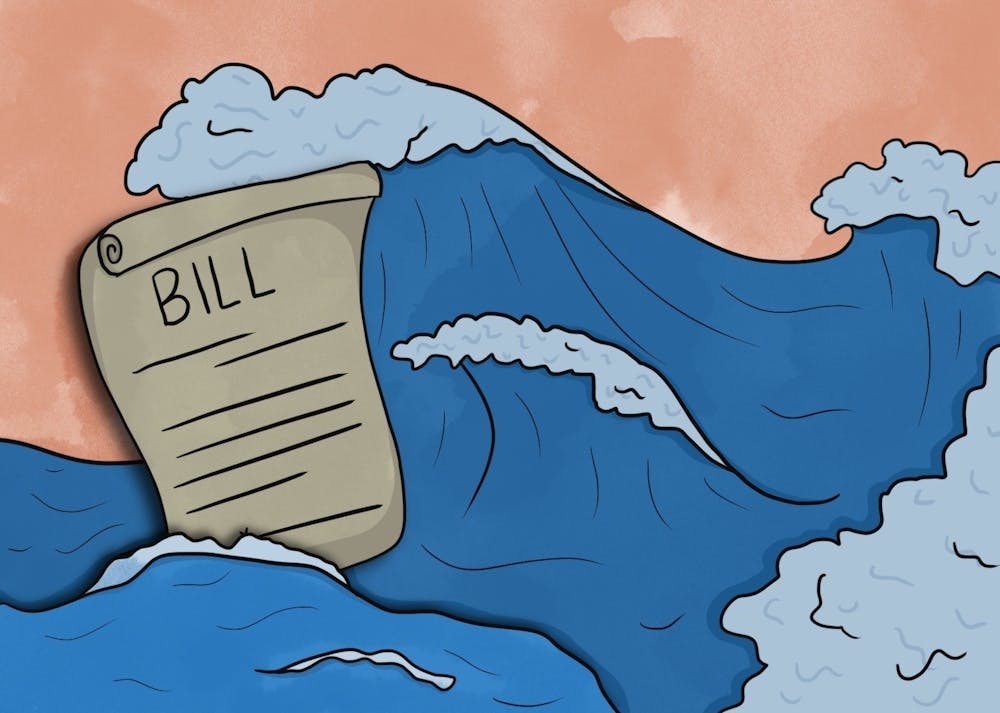As the Colorado River faces its first-ever water shortage, Arizona and other large areas reliant on the water source are preparing to face major cuts, according to an August announcement from the Bureau of Reclamation.
The cuts include a 512,000 acre-foot reduction of Arizona's water along the Central Arizona Project — the 336-mile long system of canals and pumps which deliver central Arizona's water, said Sarah Porter, director for ASU's Kyl Center for Water Policy at the Morrison Institute for Public Policy.
Senate Bill 1822, an environmental bill passed in June, established the Drought Mitigation Revolving Fund, a $160 million investment designed to help provide financial support for water supply and conservation projects, in an effort to ease pressures from the upcoming water shortage.
The bill set up the Drought Mitigation Board, a group of six current members, some of whom are required to have a "strong background in water issues" and represent a variety of counties. The group will oversee the usage of money from the revolving fund, according to the bill.
"We need to figure out how that water can either be saved, conserved, moved around if need be," said Arizona Senate President Karen Fann (R-Prescott). "And this drought mitigation is just one other step that goes along with all the other water conservation plans that we have done."
Although about a third of the water the CAP delivers will be cut, Porter said central Arizona agriculture, specifically in Pinal County, will likely feel the majority of the shortage.
Fann said the drought mitigation funds could support both farmers and people in cities.
Initiatives that could receive funding include low water landscaping for homes, groundwater preservation projects, drip irrigation for agricultural areas and water augmentation projects such as desalination, which removes salt from ocean water.
To educate the public on the conversation of water, the Julie Ann Wrigley Global Futures Laboratory at ASU received a recent $5 million grant from the Virginia G. Piper Charitable Trust for a research project collaboration with the Kyl Center for Water Policy at ASU's Morrison Institute for Public Policy and the Decision Theater.
The research project aims to create visualization tools to help people understand the complexities of the issue of water in Arizona, so they can understand the impacts of legislation, according to Porter.
"This (SB 1822) is an important first step in this big adjustment that we're going to make as a state to less dependence on the Colorado River and a drier future," Porter said. "Anything we can do to help more people understand the parameters of these decisions is a good thing. It means more people have a say in their own future and the future of the state."
Sandy Bahr, director of the Sierra Club's Grand Canyon chapter, has opposed the bill since it was first introduced.
"They allocated a lot of money but there was no effort this session or the previous one to really address some of the underlying issues, including the structural problems with the water laws," Bahr said.
Bahr said throwing money at the issue was especially concerning given the passage of a bill, Arizona House Concurrent Memorial 2004, which urged U.S. Congress to fund a study harvesting Mississippi floodwaters and using a diversion dam and pipeline to pull the water into areas affected by the Colorado River shortage.
Not only will an ambitious project like pulling in out-of-state water cost money, Bahr said, but it will also have significant environmental impacts.
"There's no discussion, really, about the impacts of doing that. I mean the floodwaters are one of the things that make the agricultural lands along the Mississippi so productive," Bahr said. "And so if you start messing with that, what else are you messing up?"
Fann said some of the ideas tossed around are more realistic than others, but Arizona needs a permanent solution for the water issue. To Fann, SB 1822 is a tangible investment into the future of water for the state.
"Let's start talking about real solutions about what we can accomplish so that there is enough that we can preserve and take care of and make sure we're not water mining, that there's enough to go around," Fann said.
Reach the reporter at alcamp12@asu.edu and follow @Anna_Lee_Camp on Twitter.
Like The State Press on Facebook and follow @statepress on Twitter.
Continue supporting student journalism and donate to The State Press today.




